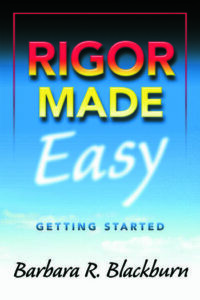3 Key Beliefs that Impact Students’ Learning

What do your students believe about learning? Their beliefs affect their behaviors.
Let’s look at three beliefs that impact learning for students as well as strategies we can use to help students respond positively:
► Perspective of self and others
► Connections
► Views about failure
Perspective of Self and Others
When working with students who are struggling, begin by recognizing the real issue. They aren’t simply bugging you. They truly don’t trust in or believe in themselves or their judgment. There is no short-term solution to changing beliefs but there are actions you can take to support students who do not have positive beliefs.
First, let’s think about a boy we’ll call Kevin. When he comes to you for help, don’t just give the answer, which may only encourage the dependency. Instead, ask him what he thinks and keep asking until you get an answer.
You may have to encourage. You may have to wait. You may have to ask multiple times. Keep at it until he starts thinking about what he’s answering. Provide positive reinforcement when he attempts to figure it out independently first, even if he isn’t right. Then provide more positive reinforcement for ultimately solving the problem himself.
You might also allow him to ask some other students for help, but that should be limited. I have used the rule “Ask Three Before Me,” meaning a student should ask three students before asking me a question, but it’s limited to three.
That may sound a little complicated, but it’s like any other routine – if you take time to teach it to students, you save time later. Just count how many times students come to you for very basic, simple questions (What page did you say? Which problems? Where did you say to put this paper?).
Look for opportunities to praise him for working out a solution on his own to reinforce that positive behavior. Also, help him develop a list of the strategies he can use to solve problems. If your student keeps a journal, have him designate a section and keep a log of strategies that have worked for him in the past. For example, if drawing a picture helps him remember a key concept, he should write that down so he will remember it next time.
You might also choose to teach him a structured way of dealing with some common issues, such as encountering new vocabulary words. Some of my students had one response for figuring out the new word: ask me! I developed a simple set of procedures for what to do when they didn’t know a new word. They quickly learned to try other options before they came to me.
Connections
On the other hand, nonstrategic learners don’t even realize they are thinking, even when they are thinking negative thoughts. Durrell isn’t connecting learning to himself or any other content unless you tell him. He feels like learning is a word search puzzle. The information is hidden inside other letters, and he doesn’t know where to look. To help him make connections, provide clear modeling of your thinking.
Non-strategic learners also don’t seem to make the connection between what you ask them to do and what it would look like if they were successful. I had one student who turned in a book report, and in exasperation, I said, “Were you even in the room when I explained this?” That was the wrong thing to say.
The reality was that Brianna gave me what she thought I wanted, but she didn’t understand. I’ve learned that the most important thing I can do to help my students with this issue is to show them multiple examples of what “good” looks like.
Views About Failure
A third difference between the strategic and the nonstrategic learner is how students view failure. Some students expect to be perfect on the first try (and don’t we all want to do that!). But when that doesn’t happen, there are two choices. For struggling students, anything short of “being right,” which includes receiving feedback and/or constructive criticism, becomes a stop sign – a symbol of failure.

This contrasts with strategic learners, who use feedback and criticism to improve because they view failure as a learning process. They recognize that failure happens to everyone, and that success comes from building off failures. With my students I openly discussed the role of failure in success, giving personal examples as appropriate to show that everybody fails.
I’ll never forget the night I brought my graduate students an article I’d written that had been rejected by an educational journal. They assumed I’d never experienced rejection, and it was helpful for them to see me respond to that in a positive way. We all have times we are not successful – it’s important to show students how to overcome those times. Also, encourage your students who do try, particularly if they are not successful on the first attempt.
A Final Note
Oftentimes we find ourselves working with students who have a negative perception of themselves, are unable to make connections, or who struggle with failure. However, there are small actions we can take to help our students overcome these issues.
Be sure to check out
Dr. Blackburn’s collection of MiddleWeb articles:
Barbara Blackburn’s Best Advice for Beginning Teachers

Barbara is the author of Rigor Made Easy and Rigor is NOT a Four-Letter Word from Routledge/Eye On Education. Her latest book is Rigor in Your Classroom: A Toolkit for Teachers (2nd Edition). Visit her website.
































